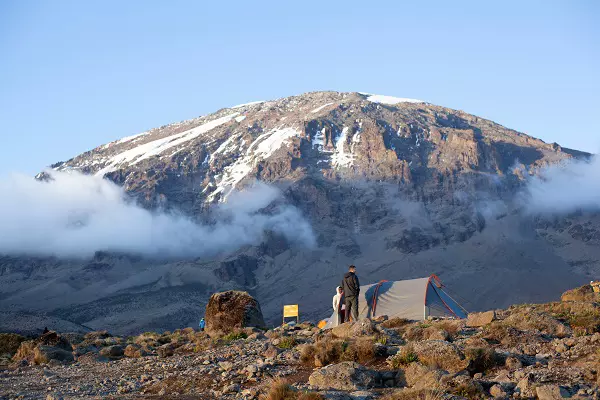
Mount Kilimanjaro, Africa's tallest peak and a symbol of awe-inspiring natural beauty, stands as a beacon for adventurers and nature enthusiasts worldwide. Beyond its towering presence, Kilimanjaro holds a tapestry of facts and wonders that add depth to its allure. In this exploration, we delve into essential Facts About Kilimanjaro, offering a fascinating glimpse into the mystique surrounding this iconic mountain.
Kilimanjaro proudly claims the title of Africa's highest peak, soaring to an impressive elevation of 5,895 meters (19,341 feet) above sea level. The Uhuru Peak, situated on the dormant volcanic cone of Kibo, stands as the summit of this majestic mountain.
Kilimanjaro encompasses five distinct climatic zones, each with its unique characteristics. The trek to the summit takes adventurers through cultivated farmlands, lush rainforests, alpine meadows, moorlands, and the barren landscapes near the summit.
Kilimanjaro is a stratovolcano with three main cones: Kibo, Mawenzi, and Shira. Kibo, the highest and central cone, houses the iconic Uhuru Peak. Mawenzi, the second-highest, and Shira, the oldest, contribute to Kilimanjaro's geological diversity.
Despite the global challenge of glacial recession, Kilimanjaro is home to majestic glaciers. Notable glaciers include the Northern Icefield, Southern Icefield, and the Furtwängler Glacier, each adding a touch of icy grandeur to the summit.
Kilimanjaro's lower slopes boast rich biodiversity, featuring a variety of plant and animal species. The rainforests are home to colobus monkeys, leopards, and a vibrant array of birdlife, creating a haven for nature enthusiasts.
Kilimanjaro holds cultural significance for local communities, especially the Chaga people. The mountain is often referred to as the "Roof of Africa," and its slopes are adorned with tales, traditions, and rituals passed down through generations.
Climbers can choose from several routes to ascend Kilimanjaro, each offering a unique experience. Popular routes include Machame, Marangu, Lemosho, Rongai, and the Northern Circuit. The choice of route influences the duration, scenery, and difficulty of the climb.
The ascent through Kilimanjaro's diverse climatic zones is accompanied by changes in vegetation. As trekkers climb higher, they transition from rainforests to heath and moorlands before reaching the stark lunar-like landscapes near the summit.
Witnessing the sunrise from the summit of Kilimanjaro is a mesmerizing experience. As the first light of dawn graces the landscape, trekkers are treated to panoramic views that stretch across vast plains and distant mountain ranges.
Altitude sickness is a genuine concern for climbers ascending Kilimanjaro. Proper acclimatization, hydration, and awareness of symptoms are crucial for a safe and successful climb.
As adventurers set foot on the slopes of Kilimanjaro, they embark on a journey that transcends the physical act of climbing. The mountain's profound beauty, geological marvels, and cultural significance converge to create an experience that lingers in the hearts of those who venture to its summit. These Facts About Kilimanjaro unveil the layers of wonder that make this iconic peak not just a mountain but a living testament to the grandeur of nature and the indomitable spirit of exploration.